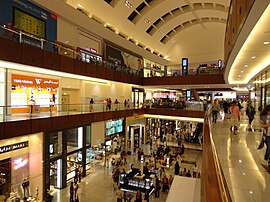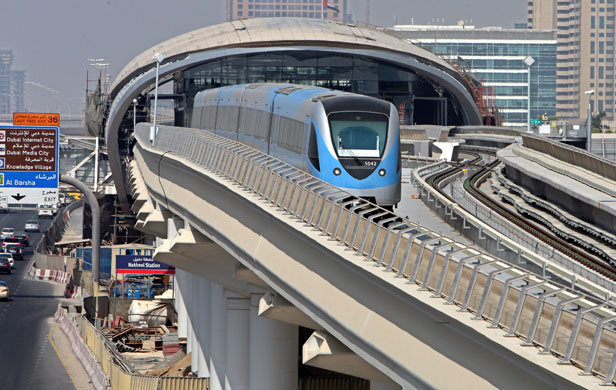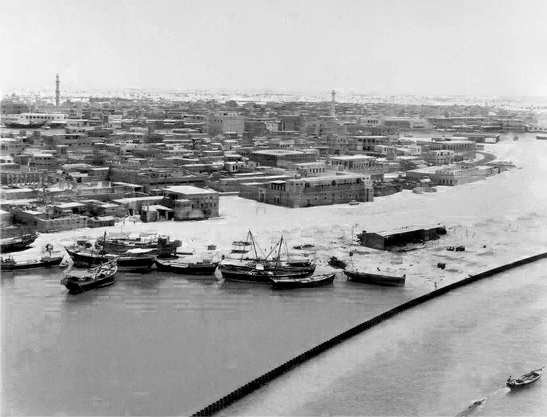New UAE labour law changes from January 2011
Retirement age in UAE
Maximum age that foreign workers can be employed in UAE increased from 60 to 65 years old.
Part time work permits for students and other expat residents
From January 2011, university and college students sponsored by the institute in the UAE at which they are enrolled can legally work part-time under certain conditions. Students need to apply for a part-time work permit from the UAE Ministry of Labour (MOL). Not clear if students must be studying full-time, or if the new labour law decree also applies to part-time students.
A report in Gulf News 08 February 2010 said Gobash recalled an incident when the son of General Shaikh Mohammad Bin Zayed Al Nahyan, Crown Prince of Abu Dhabi and Deputy Supreme Commander of the UAE Armed Forces, was denied the right to take up a part-time job in a company because there was no law regulationg [sic] these work permits. Implying that UAE National students also need a part-time work permit to be legally employed.
The part-time employment permit is also available to expat residents working full-time who have a valid labour card, and to expat wives sponsored by their husband. Not clear if expat husbands under wife sponsorship can also obtain a part-time work permit.
The part-time employment permit allows the holder to be employed in more than one part-time job.
Juvenile or teenage work permits
From January 2011, teenagers from 15-18 years of age can find jobs in the UAE after obtaining a teenage work permit from the MOL.
There are restrictions on the type of work and hours of employment. Ministerial decree 1189 for 2010 specifies 31 categories of work in which juveniles are not permitted to work, including underground jobs in mines, quarries, and other work related to mining; furnaces of melting metals; oil refining; bakeries; asphalt industry.
Some reports refer to the work permit as part-time only but it appears that full-time work is permitted.
Validity period of juvenile work permit is one year maximum.
Short term and temporary labour permit in UAE
Expat and foreign workers over the age of 18 (and less than 65 years of age) who have not previously worked in the UAE can now apply for short-term work permits valid for 60 days at a time according to UAE Ministry of Labour (MOL) information reported by the Al Khaleej newspaper 26 January 2011.
The 60-day work permits can be renewed up to 5 times (6 times reported but later information said maximum total period of one year), renewal must be made before expiry date of the permit or last renewed period.
Work permit initial fee AED 500. Work permit renewal fees and bank guarantee amount not reported.
Fine of AED 500 will apply for every 10 day period past the expiry date.
Permit will automatically be cancelled if fees and bank guarantee not paid within 60 days. Not clear if this means within the validity period, or within 60 days after expiry of the permit.
Short term work permits not available to UAE and GCC nationals (not that they need a work permit anyway, at least not UAE citizens).
A report in Emirates Business 24-7 on 05 February 2011 said "Also, priority will be given to Emiratis and GCC nationals who can take up the required job" making it sound like those nationalities need to apply for a short term permit, however it is more likely that the intention is that permits should only be issued to foreigners if the company cannot find an Emirati or GCC citizen to do the same job, since they don't need work permits for the UAE as far as we know.
Applications to be made at Tasheel center by employer or company representative, who must have electronic signature authority. Workers cannot apply for a temporary permit themselves.
In some circumstances, e.g. unpaid salaries for more than 2 months, workers can obtain a temporary work permit even if their current employer objects
Changes to laws about part-time work in the UAE - January 2011
Students and housewives can work part-time in the UAE according to changes in the UAE Labour Law from January 2011.
Part-time work permits will be available for one year at a time (fee AED 500), but female dependents and students with UAE residence visas will not need a work permit. Unclear if expat husbands sponsored by expat wives can work part-time without a permit.
Expatriate male dependants (husbands and sons) of Emirati women do not need a work permit to work part-time.
New rules for NOC, employment permit, and labour ban in Dubai and UAE - January 2011
Tel 800-6655 (toll-free in UAE) MOL helpline for questions.
As of Saturday 01 January 2011, new rules in the UAE reduce the employment period for which an NOC is no longer required when changing sponsors from 3 years to 2 years.
As far as we know, this does not apply to employees on fixed term contracts who leave before the end of their contract (which, unless a contract specifically allows this or the employer agrees to an early departure, means the employee has broken the terms of their contract and might still be subject to a 1 year labour ban instead of the automatic 6 month labour ban that usually applies when leaving a job in the UAE).
This information to be updated as the new law becomes more clear.
NOC no longer needed in UAE?
A Gulf News report 20 December 2010 said a government official clarified that the new law completely scraps the "no objection certificate" (NOC) (the official might have been Humaid Bin Deemas, Acting Director-General of the Ministry of Labour? Not confirmed). Which was not actually that clear. The NOC is no longer needed only for workers who have completed 2 years of employment. An NOC is still required for employees who have completed between 1 and 2 years of an unlimited contract. For those working less than 1 year, or breaking a limited period contract, a 1 year ban is still possible.
New law for NOC and ban period in UAE
On 16 December 2010, the official UAE news agency, WAM, published news about the new UAE labour law regarding ban periods (Cabinet Resolution No 25 of 2010 regarding internal work permit at the Ministry of Labour, issued by the UAE Minister of Labour, Saqr Gobash).
Transfer without NOC or ban is only possible if the employee has worked at least 2 years with the employer, and the employee and employer have terminated their relationship "cordially". The WAM report said The resolution says that the new employment permit will only be granted to the worker after the end of his work relationship with his employer without consideration of the legitimate six month period which is usually calculated after the cancellation of the worker's labour card, but stipulates two must-do conditions : firstly, the two contracting parties must have ended their work relationship cordially and secondly, the worker should have worked with his employer for two years at least- the duration of the new labour card which will be issued by early January.
However, an employee can obtain a new work permit without the agreement of the sponsor at the end of the contractual period (2 years minimum?) in 2 cases: First : when the employer fails to honour his legally or contractual obligations. Second, in the condition of expiry of work relationship where the worker takes no responsibility such a complaint filed by the worker against his firm.
Or, there are 3 situations in which a worker can get a new work permit even if s/he has been employed less than 2 years. First: When joining his new job, the worker should be classified in the first, second or third professional class and that his new salary should not be less than Dh 12,000, Dh 7,000 and Dh 5000 if he is in the first, second and third class respectively. Second:Non-compliance of the employer with legal, labour obligations towards the worker or in the case where the worker has no role in terminating the work relationship. Third: Shifting of the worker to another firm the employer owns it or has stakes in it.
Other points to note about the new Labour Law regulations (all unconfirmed as of December 2010)
Labour card fee to be reduced to AED 300 (should be payable by employer) for companies at the top level of 5 categories - those employing at least 20% skilled workers, and 15% Emirati nationals. Other companies will pay AED 600 to AED 5,000 per employee for labour cards?
Skilled workers divided into 3 categories:
University degree holders
Partial college level study completed (diplomas, certificates, etc beyond secondary education)
Secondary school education completed
Cheaper labour card costs for companies employing minimum 20% skilled workers, of whom 15% are Emiratis, and being paid a minimum salary as in the table below (system introduced mid-December 2010) (unclear if minimum salary requirement is for Emiratis only, or all nationalities):
| Level | Education | Minimum Salary | Labour Card Fees | |
|---|---|---|---|---|
| 1 | Skilled | University degree | AED 12,000 | AED 300 |
| 2 | Skilled | Post secondary | AED 7,000 | |
| 3 | Skilled | Secondary | AED 5,000 | |
| 4 | Unskilled | |||
| 5 | Unskilled |
Automatic 6 month employment ban to be lifted for skilled and professional workers.
Changes in the law prompted by a UAE Ministry of Labour (MOL) study - Humaid Bin Deemas Al Suwaidi, MOL Undersecretary, was reported as saying (29 December 2010) "We did a study and found that 70% of employees end their contracts before completing the three years."
Employer attitudes in the UAE summed up nicely by a comment reported in The National 28 December 2010 - a company administrator said about their employees "We used to have control over them, and we knew it wasn't easy from them to go, now we will lose this control." Which is probably just what the MOL hopes will happen - the loss of control that is.
Clarifying the question of whether or not workers on fixed contracts can leave at any time during their contract period, Humaid Bin Deemas Al Suwaidi, MOL Under-secretary, was reported on 27 December 2010 to have said on UAE radio stations that "They cannot unless the contract has ended - legally. They have to respect their contracts. They are the ones who agreed to them, or agreed on their renewal."
The National reported on 27 December 2010 that the MOL Undersecretary said only 0.4% of the private sector workforce are Emirati nationals - about 16,000 out of 4 million registered workers in the UAE.
New company categories in UAE - 05 December 2010 (WAM)
Companies in the UAE classified into 3 categories according to Resolution Number 1187 of 2010 on Regulations and Criteria of Classification of Firms in implementation of Cabinet Resolution Number 26 of 2010, issue date 11 August 2010 by UAE Minister of Labour, Saqr Gobash. New categories replace previous classification system in operation since 2005.
Implementation not until July 2011? Emirates Business 24-7 reported on 11 January 2011 that The UAE Ministry of Labour has clarified that new labour law amendments due to be implemented in July this year ...
Article 10 covers the introduction of practical and real mechanisms for voluntary Emiratisation.
| Category | Level | Qualification | Minimum Salary | Minimum staff | Emiratisation | Cross-cultural compliance |
|---|---|---|---|---|---|---|
| First | 1 (A) | Degree | AED 12,000 | 20% | minimum 15% | |
| First | 2 (B) | Diploma | AED 7,000 | 20% | minimum 15% | |
| First | 3 (C) | Unskilled | AED 5,000 | 20% | minimum 15% | |
| Second | 1 (A) | AED 12,000 | minimum 15% | minimum 75% | ||
| Second | 2 (B) | AED 7,000 | minimum 15% | 50%-75% | ||
| Second | 3 (C) | AED 5,000 | minimum 15% | below 50% | ||
| Third |
First group of companies information in italics based on Emirates 24-7 report 11 January 2011 (Dh12,000 minimum salary for degree holders part of new company classification policy ... UAE Labour Ministry clarifies that amendment applies to only Category I firms under the new system), appears to conflict with or revise previous information giving similar requirements for Category II companies.
Category I companies will be exempted from paying a bank guarantee for workers.
Category I companies exempted from paying visa deposit fees.
Companies upgraded to Category I may not reduce employee salaries below the minimums specified, otherwise they are at risk of being downgraded again.
Minimum staffing levels given as 20% in various reports but not clear if for each classification, or total for all 3 classifications.
Second group of companies is subdivided "based on their commitment to certain standards like emiratisation, wages and housing" according to comments from UAE Minister of Labour, Saqr Gobash (05 December 2010 WAM report).
Category II companies must pay AED 3,000 bank deposit per worker, up to a maximum of AED 1.5 million (level A), AED 3m (B), or AED 5m (C).
Cross-cultural compliance policy based on WAM report 05 December 2010 that said "For the second group, the resolution arranged firms to A,B and C according to cross-cultural policy. A company is sorted in group A if it does not commit itself to this policy by at least 25 per cent. A non-compliance of 25 to 50 will place the company in grade B and C if the percentage crosses the 50 mark." No, we're not sure if we understood it correctly either, and no, we don't know how it's measured anyway.
Third group of companies is those with 100 or more black points for labour law related offences and convictions such as recruiting infiltrators, human trafficking, providing wrong information regarding the wages protection system (WPS), or failing to observe emiratisation policy. Companies can be fined from AED 15,000-20,000 for such offences.
Category III companies required to pay AED 3,000 bank deposit per worker up to a maximum of AED 10 million.
Exemptions from paying bank guarantees irrespective of company category apply to:
Industrial projects licensed by the UAE Ministry of Economy.
Federal or Local Government companies and organisations.
Non-profit organisations, cooperative associations, and national associations under the supervision of the UAE Ministry of Social Affairs.
Minimum salary in UAE - February 2011
As a result of UAE Labour Law changes at the start of 2011, several reports emerged with headlines or articles claiming that the minimum salary paid in the UAE had increased to AED 5,000, AED 7,000, or AED 12,000.
Such claims should be taken with a pinch of salt. The labour law changes specified the requirements for a company to be classified as a second category company (or 2nd level, or something similar - a variety of terms are being used), including minimum salary. This does not mean there is a blanket minimum salary requirement in the UAE.
New labour permit fees UAE - December 2010
New Ministry of Labour (MOL) fees reported in Al Khaleej newspaper 20 & 29 December 2010 (as per Article 2 of Ministerial Decree No 26 of 2010), costs and fees effective from January 2011:
Companies are exempted from paying the following fees for Emirati employees.
| Fee category | Amount (AED) | Frequency | Notes |
|---|---|---|---|
| MOL registration fee for new companies | 2,000 | once | |
| Digital signature processing for new companies | 250 | once | |
| Companies employing non-Emirati PROs | 2,000 | 2 yearly | |
| Lost or damaged PRO card | 200 | ||
| Labour card for employees under family sponsorship | 2,000 | 2 yearly | |
| Labour card for category 1 workers | 300 | 2 yearly | |
| Labour card for category 2 level A workers | 600 | 2 yearly | |
| Labour card for category 2 level B workers | 1,500 | 2 yearly | |
| Labour card for category 2 level C workers | 2,000 | 2 yearly | |
| Labour card for category 2 workers | 5,000 | 2 yearly | |
| Labour card for employees over 65 years old | 5,000 | 2 yearly | |
| Temporary work permits for minors (15-18 yrs old) initial fee | 100 | ||
| Temporary work permit up to one year for minors | 500 | annual | |
| Transfer fee to new company | 300 | once | |
| Labourer importing fee per company (initial) | 10,000 | ||
| Labourer importing fee per company renewal | 5,000 | annual | |
| Fine for delayed labour card application (after 60 days) | 1,000 | monthly |





























